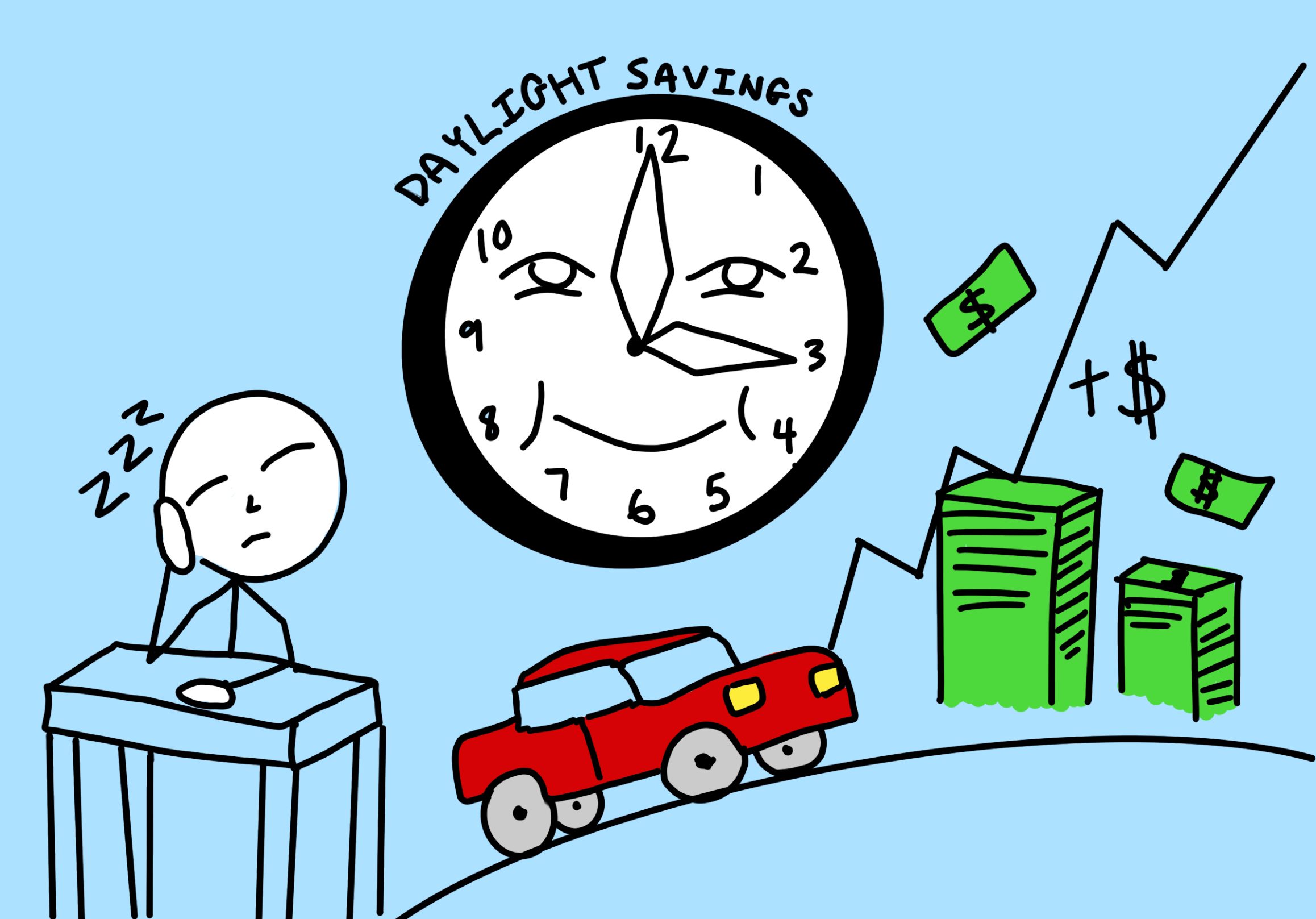Daylight Saving Time is Ruinous to Our Wellbeing
November 17, 2023
Twice a year, clocks around the country are adjusted for daylight saving time (DST), an antiquated system predicated upon the notion that reducing the amount of time spent in bed is somehow conducive to energy conservation and worker efficiency.
States should consider adopting a permanent standard time to synchronize body clocks with sunrise and sunset instead of forcing people to alter their schedules biannually.
Daylight saving time disrupts circadian rhythms, which modulate sleep cycles and physical, mental, and behavioral changes within the human body. Even a slight time difference can cause individuals’ body clocks to change significantly, giving rise to fatigue that begins to manifest by mid-day, according to SleepFoundation
This misalignment between the body clock and sped-up time can lead to reduced alertness, impaired concentration and diminished overall performance, ultimately impacting productivity in the school environment.
What’s more, people who incur sleep debt — the difference between how much sleep one needs and actually gets — from daylight saving time cannot easily catch up on missed sleep in the spring. It takes up to four days to recover from losing one hour of sleep, according to the National Center for Biotechnology Information.
“I do feel sleep deprivation in March with that 1 hour loss,” Senior Ashley Lee said.
Daylight saving time is also linked to the phenomenon of cyberloafing, the practice of neglecting work in favor of browsing the internet, according to the Pennsylvania State University. With the temptation of online distractions and social media just a click away, individuals may find themselves succumbing to the allure of procrastination during work hours.
In professional settings, where efficiency and timely completion of tasks are crucial, the negative effects of daylight saving are even more pronounced. Delays in completing individual tasks because of daylight savings can cause bottlenecks to form in team projects as well.
Proponents of daylight saving argue that it is an time-tested, efficient method to lower energy consumption in households, according to The Columbus Dispatch.
However, a 2008 study by the National Bureau of Economic Research revealed that daylight saving time does more harm than good when it comes to saving energy. Researchers concluded that residential demand for electricity in Indiana increased by roughly 1 percent due to daylight saving time, racking up $9 million in electricity bill costs and $1.7 to $5.5 million in pollution emission costs per annum.
An increase of 2 to 4 percent in electricity consumption rates in the fall notably coincided with the start of daylight saving time, counteracting claims that it is in any way beneficial for environmental concerns. Moreover, daylight saving time was first integrated in belligerent nations during World War I to save fuel, according to the Library of Congress. This motive no longer applies to the modern era as recent data shows that daylight saving time produces mixed results.
Clearly, daylight saving time is past its heyday; substituting it for permanent standard time — a fixed year-round time — would work wonders for people’s health. Lawmakers should listen to the recommendations of medical professionals and do away with daylight saving time once and for all.





